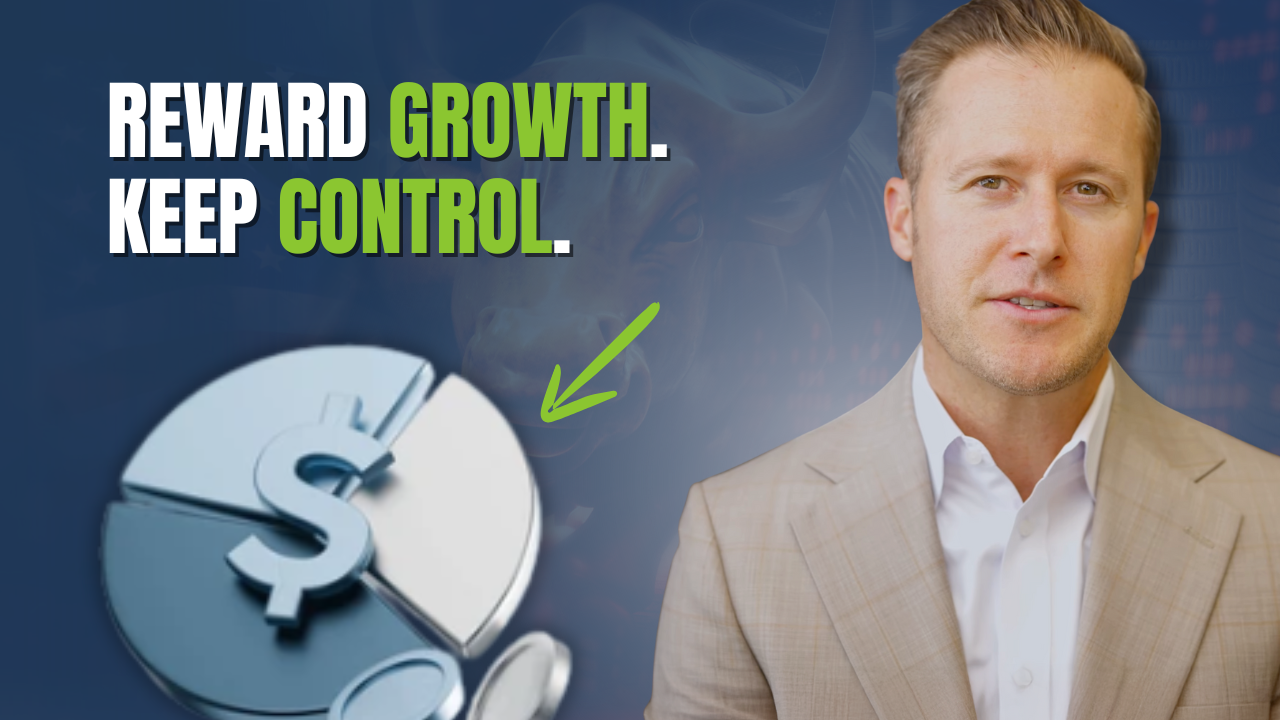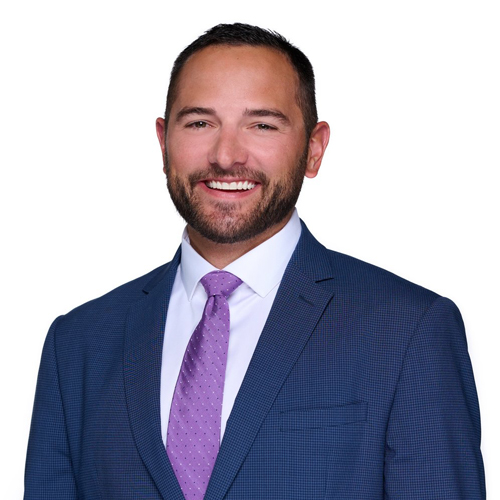Modern Portfolio Theory (MPT), introduced by economist Harry Markowitz in 1952, shifted investing toward a focus on risk-adjusted returns and the power of diversification. MPT provided a mathematical framework to construct a portfolio that maximizes expected return for a given level of risk. The theory is that mixing different asset classes can reduce overall risk without sacrificing returns, and a well-diversified portfolio often ends up less volatile than the sum of its volatile parts. In other words, you don’t improve your odds by chasing a single hot stock; you improve them by holding a smart mix of stocks, bonds, and other assets that don’t all move in the same direction. This foundational idea laid the groundwork for today’s quantitative tools that help investors get the most return for a given level of risk.
Asset Location: Putting Investments in the Right Place
In real estate it’s location, location, location. We could easily argue the same when it comes to investing. You may not be able to control market returns or tax law, but you can control how you utilize account types. Different investments face different tax rules, and various account types (taxable, tax-deferred, tax-exempt) offer different tax treatments. By putting tax-inefficient investments into tax-advantaged accounts (and keeping inherently tax-efficient assets in taxable accounts), investors can potentially lower their overall tax bill and boost after-tax returns.
Asset Location in Action
Consider Brad, age 45, who wants to invest $250,000 in a bond fund yielding 7% annually. He faces a 35.8% marginal tax rate on investment income. Where should he hold this investment in his taxable brokerage account, or in a tax-advantaged account. The choice matters a lot. If Brad holds the bond fund in a regular taxable account, he will owe taxes on the interest each year, which drags down his effective growth.
But if he holds it in a tax-free Roth IRA instead, the difference after 20 years is significant. The taxable account compounds at roughly 7% × (1 − 0.358) ≈ 4.49%, which would grow $250,000 to about $602,000. The same bond fund in a Roth, compounding at the full 7% without annual tax erosion, would reach about $967,000 over the same period. That is about $365,000 more just from location, assuming the same pre-tax return each year. If we accounted for capital gains taxes upon selling the taxable investment, the Roth advantage would be even larger.
Asset Location in Action
Brad invests $250,000 in a bond fund earning 7% annually. His 35.8% tax rate makes a big difference over 20 years:
Taxable
≈ $602K
Roth IRA
≈ $967K
That’s about $365,000 more from simply using the right account. Smart asset location can quietly boost after-tax returns without added risk.
Illustration simplified to isolate tax effects. Not a forecast. Excludes fees, state taxes, or law changes.
Brad’s case illustrates how tax-inefficient assets, like taxable bond funds, benefit from being in a tax-advantaged account. Empirical research backs this up. Following an asset location strategy has been shown to add roughly 0.14% to 0.41% per year in after-tax return for mid to high tax brackets, and a retired couple with a $2 million portfolio split between taxable and tax-sheltered accounts could save about $2,800 to $8,200 per year in taxes by placing assets optimally.¹ ² Those savings function like extra return earned by strategy, not by taking more risk.
Illustration is simplified to isolate tax location effects. It is not a forecast and does not include state taxes, fees, or future tax law changes. Your results will differ.
Which Investments Go Where?
So how do you decide what goes into a taxable brokerage account versus a tax-deferred 401(k)/IRA or a tax-free Roth? The general rule of thumb is: put the most tax-efficient investments in taxable accounts, and put the least tax-efficient (most tax-heavily taxed) investments in tax-deferred or tax-free accounts. Below is a breakdown of account types and the kinds of assets that tend to fit best in each:

Taxable Accounts (Brokerage)
These accounts have no special tax breaks; you pay taxes on interest, dividends, and realized capital gains each year. Thus, they’re best for investments that are naturally tax-efficient or come with built-in tax benefits. For example, tax-exempt municipal bonds are a potential choice for a taxable account because their interest income is generally federal (and often state) tax-free. Holding munis in a tax-deferred IRA would be wasteful, as you’d eventually pay ordinary income tax on withdrawals, nullifying the bond’s tax-exempt advantage.
Likewise, stocks and equity index funds that you plan to hold long-term are well-suited for taxable accounts. Long-term capital gains and qualified dividends from these assets are taxed at lower rates than ordinary income, which makes them relatively tax-efficient holdings. Additionally, if you hold stocks or equity funds in a taxable account until death, your heirs can benefit from a step-up in cost basis, meaning any accumulated capital gains may go untaxed entirely. (Had those stocks been in a tax-deferred account, the gains would eventually be taxed as ordinary income to your beneficiaries.)
Taxable Accounts (Brokerage)
Best for assets with built-in tax benefits or naturally low tax drag.
Long-term gains and qualified dividends may get lower rates. Step-up in basis can reduce heirs’ capital gains.
These can generate ordinary-income taxes and yearly capital-gain distributions that erode returns.
Overview only, not tax advice.
In summary, use your taxable account for assets that either don’t throw off much taxable income or enjoy preferential tax treatment, such as municipal bonds, broad stock index ETFs, tax-managed funds, and long-term stock holdings, since these can thrive without the shelter of a retirement account. You may also want to avoid putting high-turnover or income-heavy investments here, as they could generate yearly tax bills that erode your returns.
Tax-Deferred Accounts (Traditional 401(k)s, 457(b)s, IRAs, etc.)
These accounts (funded with pre-tax dollars or deductible contributions) allow investments to grow tax-deferred, meaning you don’t pay any tax until you withdraw the money in the future. They are ideal for tax-inefficient assets that would otherwise produce a heavy annual tax drag. A prime example is taxable bonds and bond funds (other than munis). The interest they pay is taxed at high ordinary income rates, making them highly tax-disadvantaged in a regular account. By holding your corporate bond funds, Treasuries, high-yield bond funds, etc. inside a 401(k) or traditional IRA, you defer those interest taxes for years or decades. The interest income can be reinvested and compounded without shrinkage from Uncle Sam, and hopefully by the time you withdraw in retirement, you might be in a lower tax bracket (so you’d pay less tax on that accumulated growth).
Another great fit for tax-deferred accounts are REITs (Real Estate Investment Trusts) and similar high-distribution investments. REITs are required to pay out at least 90% of their income to shareholders, and those payouts are usually not qualified dividends. Instead, they’re taxed as ordinary income if held in a taxable account, potentially creating a sizable annual tax bill for REIT investors. But if you keep REIT funds or REIT stocks in a tax-deferred account, all those earnings can churn and compound tax-free until withdrawal. Similarly, actively managed stock mutual funds with high turnover (which tend to realize lots of capital gains and pass them to investors each year) often belong in a tax-deferred account if possible. In a 401(k) or IRA, you won’t owe tax on those mutual fund capital gain distributions each year, whereas in a taxable account you might get hit with a 1099 form for gains on trades the fund manager made before you even bought the fund.
Tax-Deferred Accounts
Put income-heavy or high-turnover holdings here to avoid yearly taxes and let compounding work before withdrawal taxes apply.
Notes: early withdrawals can trigger penalties, RMDs apply to most Traditional accounts, individual tax situations vary.
Finally, high-dividend stock strategies can also benefit from tax deferral: while qualified dividends are taxed at a lower rate in a taxable account, holding high-dividend stocks in an IRA means you pay no taxes on the dividends along the way, which can potentially boost compounding (you’ll just be taxed at ordinary rates on withdrawal). In short, use tax-deferred accounts for income-generating and high-turnover assets, such as taxable bonds, REITs, commodity funds, actively-managed funds, high-yield dividend stocks, where sheltering that income from annual taxes will significantly improve growth. You’ll defer the tax hit to later, and in the meantime your portfolio can reinvest pre-tax dollars.
Tax-Exempt Accounts (Roth IRA/401(k)s and HSAs)
These accounts are funded with after-tax money (asides from the HSA, which is funded with pre-tax funds), but in exchange they grow completely tax-free, and qualified withdrawals are tax-free as well. Roth accounts are like the holy grail of asset location for investments with big growth potential or heavy tax burdens. Since you’ve already paid taxes up front on contributions, you want to maximize the benefit of never paying tax on earnings by allocating your highest-growth assets here. For example, stocks with explosive upside or equity funds targeting aggressive growth are fantastic candidates for a Roth. All their gains will accrue without any tax, and when you take the money out in retirement, none of it gets eaten by taxes. Some savvy (and lucky) investors have demonstrated just how powerful this can be.
For instance, tech mogul Peter Thiel reportedly grew a Roth IRA from $2,000 to $5 billion by using it to hold early-stage private equity shares (like startup stock in PayPal and Facebook) – all of that growth is completely tax-free under Roth rules.7While most of us won’t have access to the next Facebook, the principle holds: if you have an investment with sky-high return potential (say a startup investment, crypto, or a small-cap stock you believe in), putting it in a Roth means that if it does skyrocket, the entire gain belongs to you, not the IRS.
Tax-Exempt Accounts (Roth IRA/401(k), HSA)
Use limited tax-free space for your highest-impact holdings.
Roth and HSA rules apply. Qualified withdrawal rules and contribution limits vary.
Roth (or other tax-free) accounts are also excellent for tax-inefficient income assets if you have the room. For example, you might prefer to keep REITs or high-yield bonds in a Roth IRA rather than a Traditional IRA since not only do you defer taxes on the income, you never pay taxes on it at all. However, Roth space is precious, so you may want to reserve it for your most powerful growers and least tax-efficient winners to reap the maximum reward. One caveat: because Roth contributions are limited and subject to income phase-outs, not everyone can put all their high-upside bets there. But strategies like Roth conversions can be used if it makes sense. Just be mindful of the upfront tax cost.
In Conclusion
In practice, implementing asset location means first getting your overall asset allocation in line with your goals, and then placing those assets optimally across your accounts. However, you wouldn’t want taxes to drive your entire investment strategy. Your mix of stocks, bonds, real estate, etc. should still be determined by your risk tolerance and objectives. Once you have that target allocation, you can “locate” each asset class in the account where it’s most tax-efficient.
For example, say your desired allocation is 60% stocks and 40% bonds. Rather than holding 60/40 in both your IRA and your taxable account, an asset location approach might lead you to hold most or all of the 40% bonds inside the IRA (where their interest is tax-deferred), and tilt the taxable account to hold more stocks (since equities are tax-friendlier). You still end up with 60/40 overall when looking at the total portfolio, but each account is optimized for taxes.
Asset location is a nuanced strategy (and moving assets between accounts can incur its own tax costs), so it may take some work and even professional guidance to execute optimally. But for many long-term investors, especially those in higher tax brackets, the effort can be well worth it.
Sources:
- GuidedChoice – Harry Markowitz’s Modern Portfolio Theory & Diversification guidedchoice.com
- Charles Schwab, research on asset location and after-tax “lift.”
- Fidelity Viewpoints, guidance on placing assets across taxable, tax-deferred, and Roth accounts.
- Fidelity Viewpoints – “Are you invested in the right kind of accounts?” (Asset Location) fidelity.com
- Charles Schwab – How Asset Location Can Save on Taxes schwab.com
- TIAA – Why Asset Location Matters as Much as Asset Allocation tiaa.org
- SmartAsset/ProPublica – Peter Thiel’s $5 Billion Roth IRA (illustrating Roth growth potential) smartasset.com











